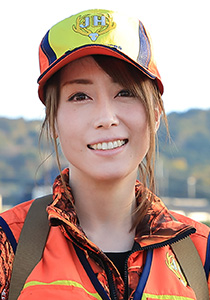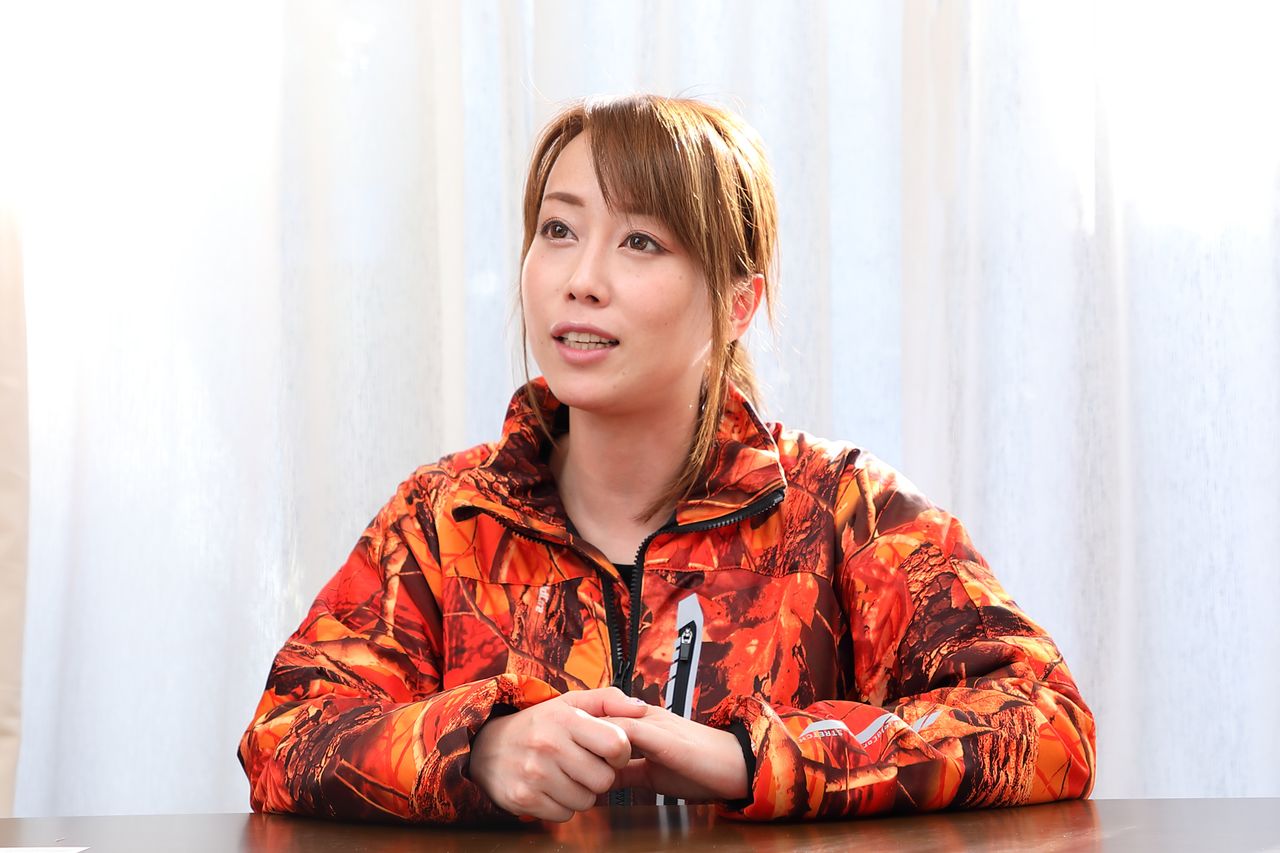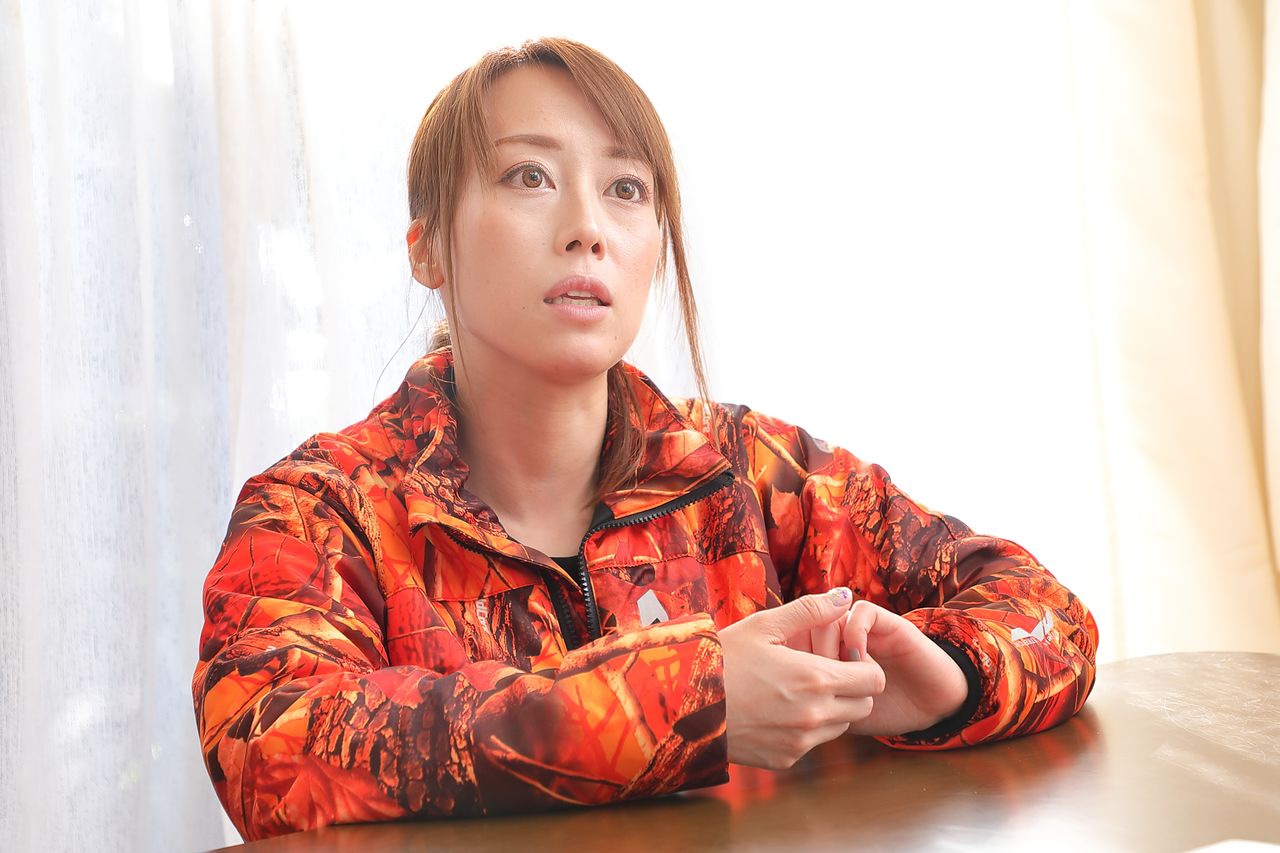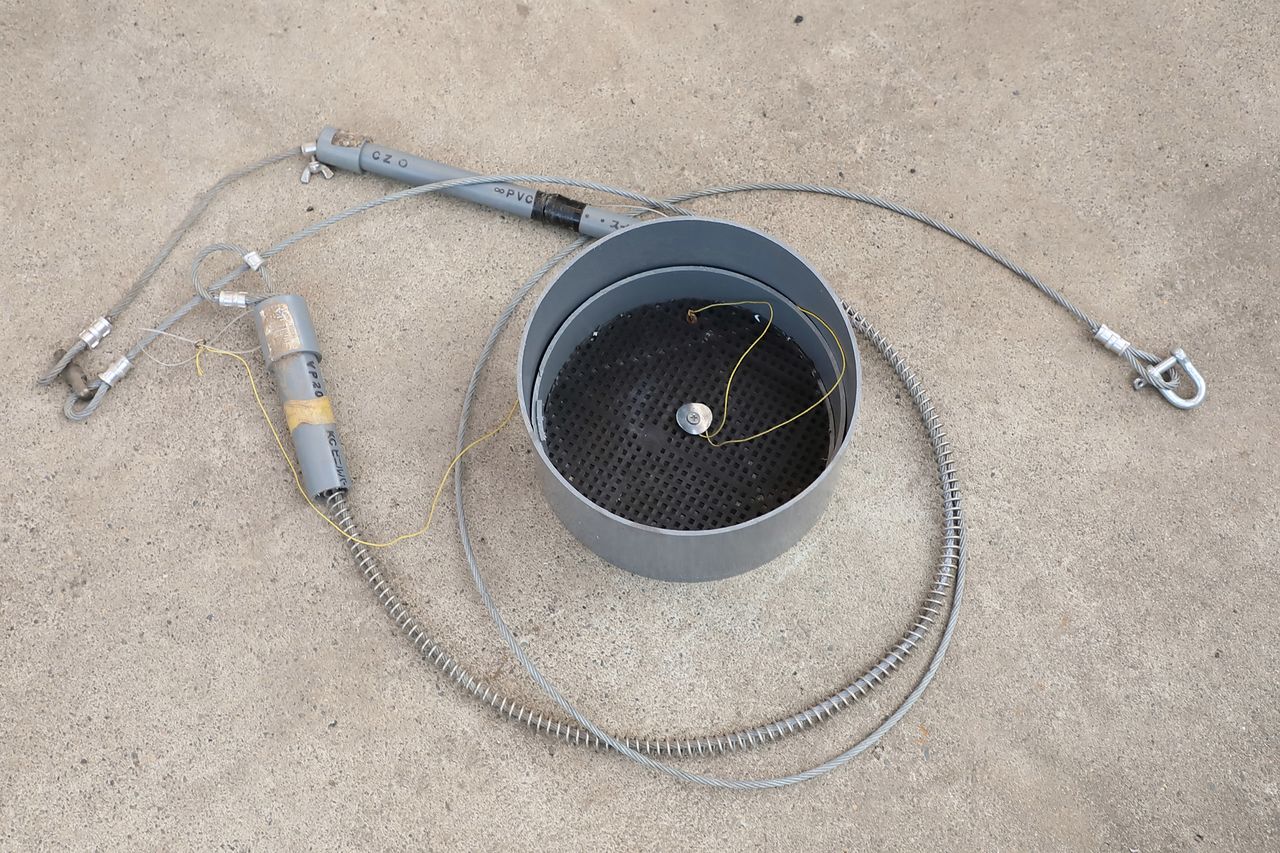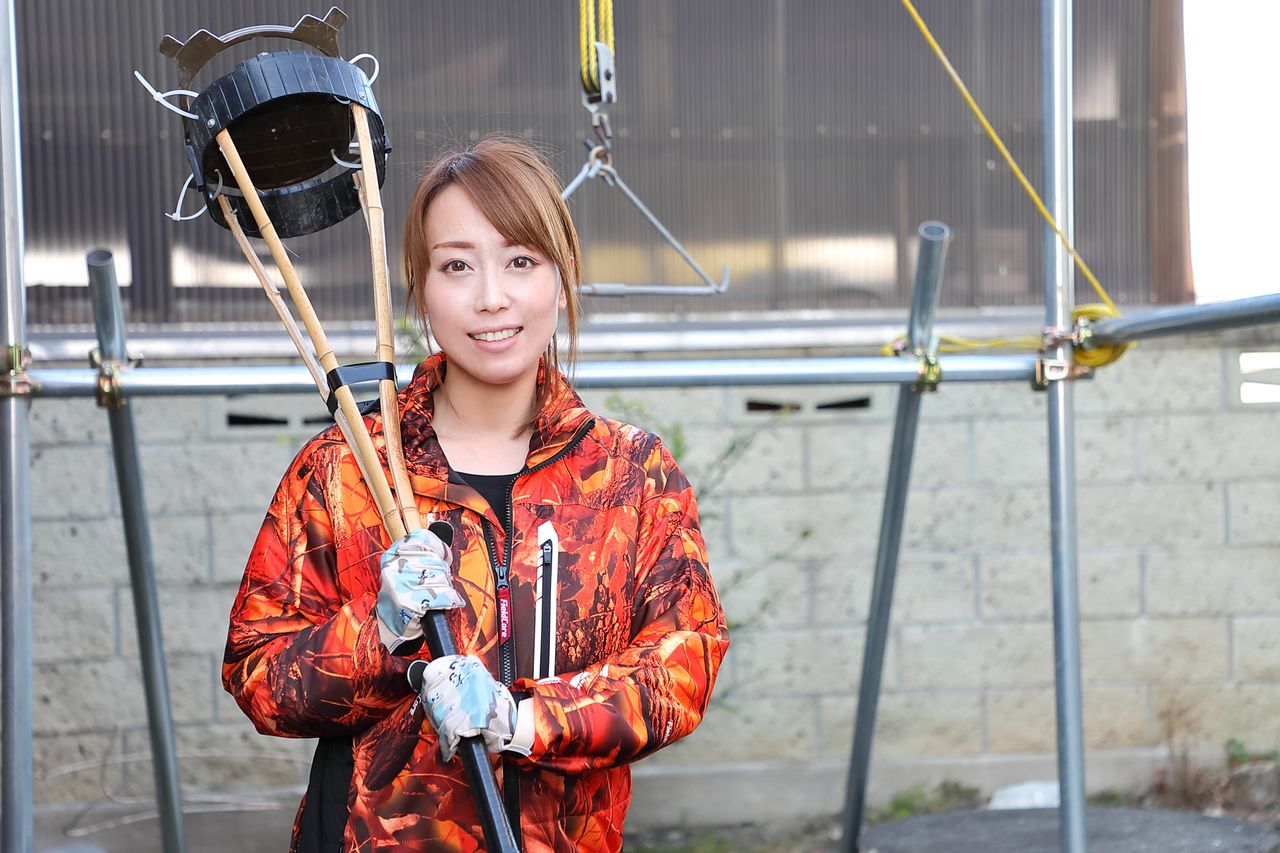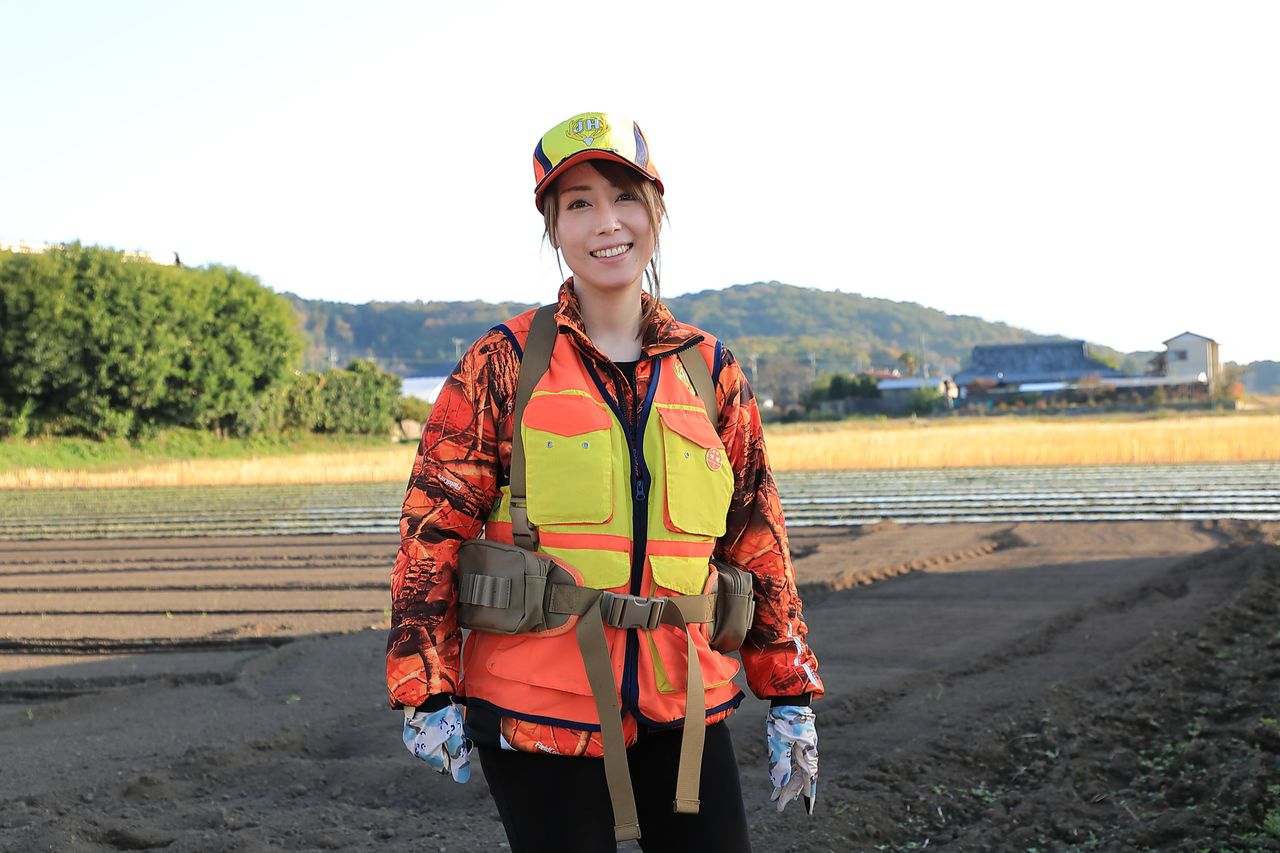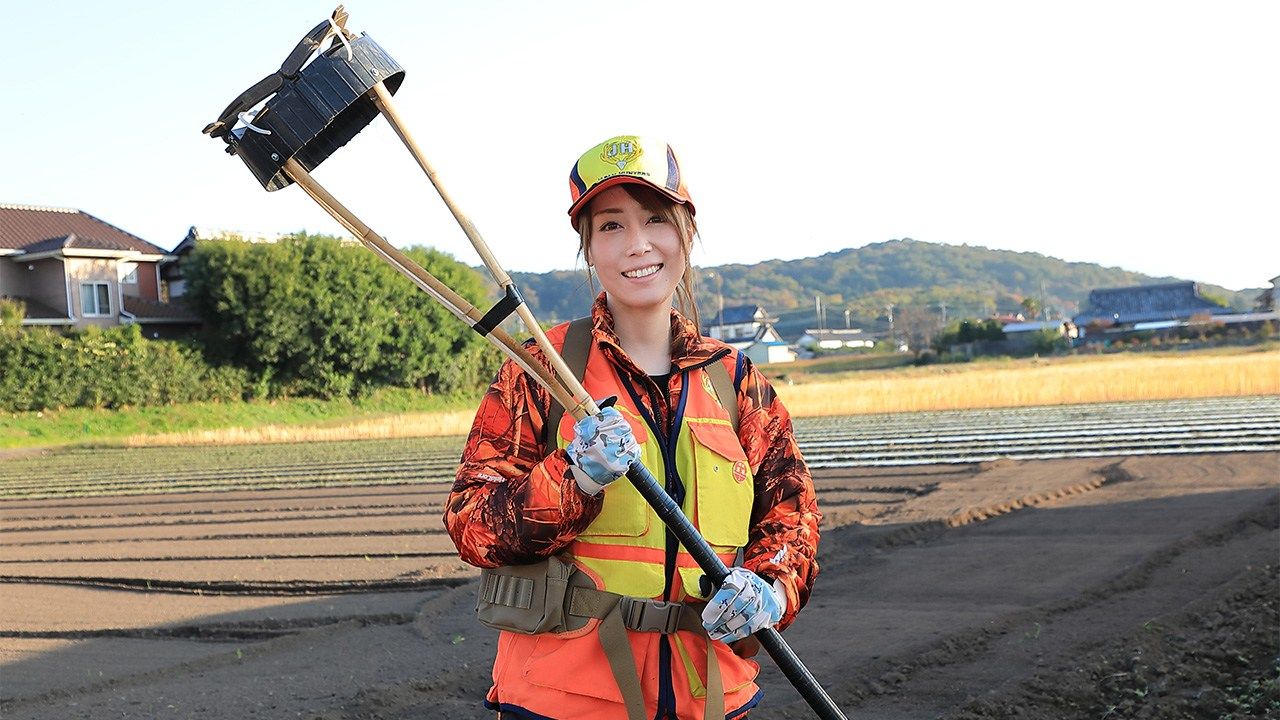
“Kari Joshi”: Female Hunter and Japanese YouTuber Nozomi Shines a Light on Country Life
Lifestyle Work- English
- 日本語
- 简体字
- 繁體字
- Français
- Español
- العربية
- Русский
From City to Country
Up-and-coming YouTube star Nozomi wears many hats: farmer, yoga instructor, and wild boar trapper. It is membership in Japan’s burgeoning population of kari joshi—female hunters—that has most captured the attention of online viewers. Her YouTube site, Nozomi’s Kari Channeru (Hunting Channel), features videos of her forays into the hills of Ibaraki Prefecture in search of prey.
Nozomi admits she is still learning the ropes. In fact, just a few years back she was living and working in Tokyo. The death of her grandfather and a family promise led her to leave the hustle and bustle of the capital behind and seek out a less hectic existence in the countryside, one that keeps her in touch with nature.
While living in the capital, Nozomi, like many others, found herself swept up in the rat race of the city. She moved to Tokyo for university and wound up staying, taking a job in the sales department of a firm after graduating. The position kept her busy—too busy. Her days started early and she frequently stayed in the office late, catching the last train home. She ate when her scheduled allowed, usually a serving of instant noodles bought at a nearby convenience store. After several years, her demanding lifestyle caught up with her—she had gained 10 kilograms and her nerves were shot.
Nozomi’s grandparents, concerned about her wellbeing, sent a care package of vegetables from the family farm in Ibaraki. Nozomi says eating the produce invigorated her. When her grandfather passed away a short time later, she made a pact with her cousins to help their grandmother, who said she was unable to tend the fields alone for much longer.
Looking to improve her health, Nozomi took up yoga while she made preparations to move to Ibaraki, eventually earning her instructor’s license. After 10 years in Tokyo, she pulled up stakes and moved north, intending to earn her living farming and teaching yoga.
The Power of Community
She knew many of the residents of her adopted community were older and held more traditional views, and one concern on her mind was whether she would be accepted by her new neighbors. Looking back, she says, there was little cause for worry. “People didn’t bat an eye,” she recounts. “Almost from the start they came up and chatted with me as I worked in the fields.” She was particularly taken by their generosity. “If they grew a type of vegetable that I didn’t, they would pick some from their field and bring it over for me.” It was a stark difference from what she had been accustomed to in Tokyo.
Living in the capital, she communicated only minimally with her neighbors out of respect for their privacy, exchanging shallow bows when passing in shared corridors. In the countryside, though, she was surprised to find comfort in the way members of the community watched out for one another.
Farming also altered her perceptions. In Tokyo, she says she gave little thought to how the produce lining supermarket shelves was grown. “I never once considered the pesticides and other chemicals used in industrial agriculture,” she explains. “Becoming a grower, though, opened my eyes.” Wanting to offer vegetables that were nutritious and free of any potentially unhealthy substances, she avoided using chemicals to keep pests at bay. However, one adversary, the wild boar, proved a formidable foe.
Swine Intruders
Nozomi recounts hearing other farmers complain of crop damage from the marauding herds of boar, but early on, the beasts never ventured into her fields. Naively believing there was no cause for concern, she was shocked to discover one day that her peanut plants, which were almost ready to harvest, had been demolished. “I was speechless,” she explains. “The boar had devoured the bushes, roots and all.”
Searching for a way to deal with the pests, Nozomi surfed the Internet for information and settled on erecting an electric fence as a barrier. While an effective tactic on a small scale, the expense and labor involved made the approach prohibitive for the many older farmers in the area who faced the same threat to their crops. Fences also failed to address the core issue of a boar population grown too large. Determined to tackle the problem head on, Nozomi decided the best way to help the community was to become a hunter.
In 2018, she earned her trapping license, adding hunting to her already busy schedule of farming and teaching yoga. She says that rather than shooting boar, setting traps fit her lifestyle. Foremost, it required only a small investment in materials, and the techniques involved were more accessible to beginners like herself than guns, which have high hurdles to ownership in Japan. (She would eventually earn her hunting rifle license in 2019.)
She soon found herself part of the local band of trappers, most of whom were seasoned veterans in their seventies or older. “I had met some hunters my age online,” she explains. “But those active in the area were getting along in years.” Nozomi understood that keeping the boar population in check with hunting would be extremely difficult without a new generation of trappers.
Prospects for finding new recruits were dim, though. The population in the area was rapidly graying, and as the number of farmers hanging up their plows had grown, so had the amount of abandoned farmland. In turn, fallow fields offering plentiful unguarded vegetation had allowed the boar to thrive, threatening the sustainability of local agriculture. Recognizing the danger, Nozomi set up her YouTube channel in the hope of raising awareness about the problem among the younger generation.
In her videos, Nozomi introduces different aspects of trapping, including the tools she uses, techniques for setting traps, and even dramatic scenes of ensnared boar—the meat of which she features in cooking segments. She says the channel has attracted a steady flow of followers. Some fans, she admits, are drawn by the novelty of a female hunter, but there are plenty of fellow trappers from around the country who also regularly tune in. She has been encouraged by the online response and has benefitted from occasional advice provided in the comments by veteran huntsmen.
While Nozomi insists she wants to depict hunting realistically, she says showing trapped boar and the process of killing and dressing game calls for a careful touch. “Views on the treatment of animals run the gamut,” she explains. “Hunting can be a touchy subject.”
Learning the Ropes
As a newbie trapper, Nozomi learned the ins and outs of catching wild boar under the watchful guidance of a local hunter, a veteran of more than 30 years. Ibaraki hunting regulations stipulate that boar must be trapped with a snare 12 centimeters in diameter or larger, and her mentor demonstrated how and where to set traps, as well as giving practical pointers on techniques like masking the human scent. While snare traps are commercially available, Nozomi learned to construct her own, purchasing most of the equipment at the local hardware store to keep costs down.
Venturing into the hills, Nozomi practiced her newly acquired skills, often with the camera rolling. However, she quickly realized that along with her tools, she needed to bring with her a hearty respect for nature. She describes during one early foray to check her traps hearing something rustling in the trees nearby. “I called out to see if it was a person, but didn’t get a response.” When she turned around, she locked eyes with a large sow, piglet in tow, standing a few meters away. “After a tense moment, the pair bolted into the undergrowth. I shudder to think at the outcome if the boar had charged.”
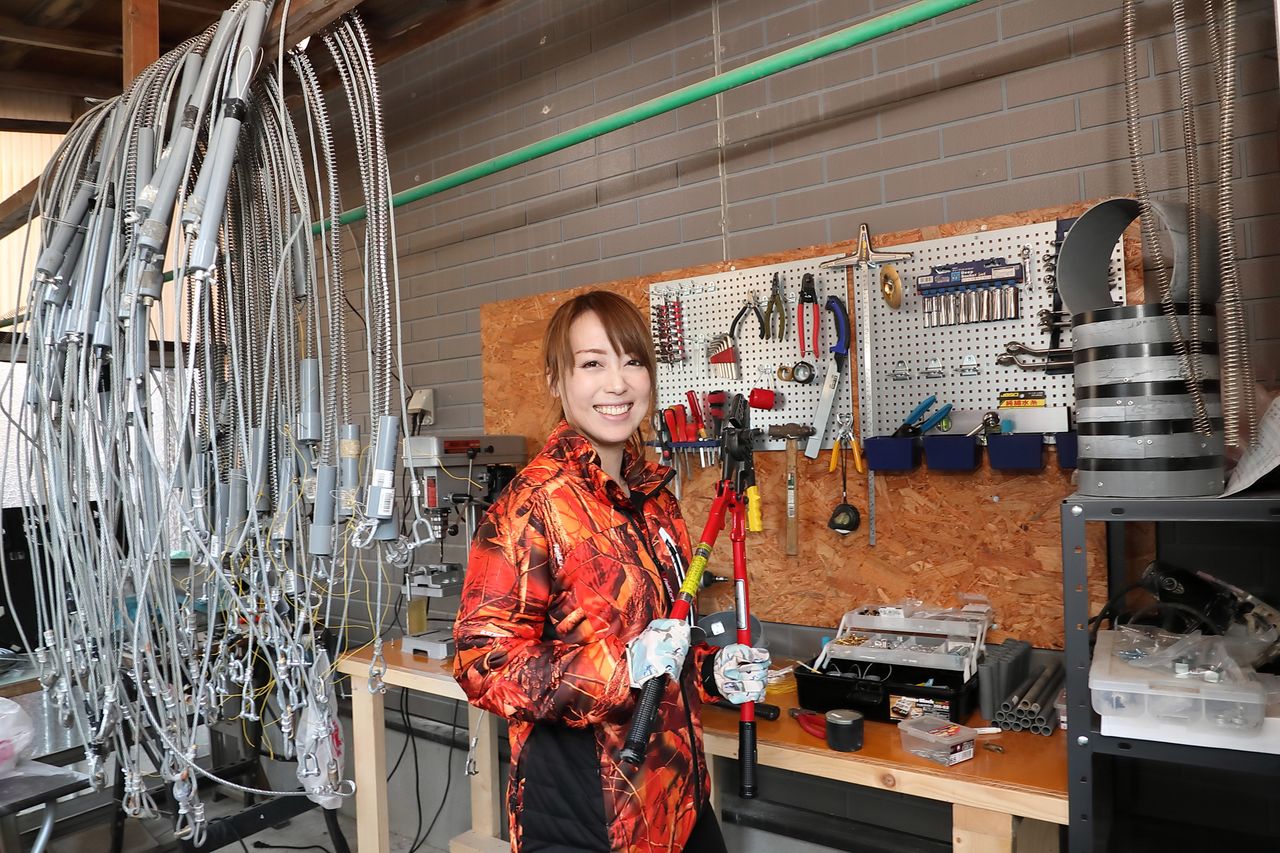
Nozomi makes her traps by hand.
During her first year trapping, Nozomi proved an able student. However, her teacher steadfastly refused to let her administer the coup de grace to trapped quarry until she had gained more experience. She admits having mixed feelings when watching the veteran hunter dispatch a boar for the first time. “Even though I had a hunting license, killing was a completely new experience,” she explains. “I felt bad for the animal, and as I watched I found myself muttering an apology under my breath.”
One early lesson she learned was the importance of hunters showing respect for their quarries. Although she no longer balks at killing the boar she traps, she staunchly adheres to her instructor’s instruction to carry out the act quickly and to vigilantly check traps to keep animal from suffering unnecessarily.
A Message of Life
A core part of this is working with speed and precision. The most humane method for killing a trapped boar is to sever the major nerves and arteries that run between the shoulder and neck. Locating the right spot, however, requires skill and practice. Nozomi says despite her best efforts, nerves and inexperience caused her to miss the mark in her first attempt. Panic set in as the animal grunted and struggled to escape, but even though she was distraught and crying, she had to complete the act on her own as her teacher and members of her YouTube team looked on.
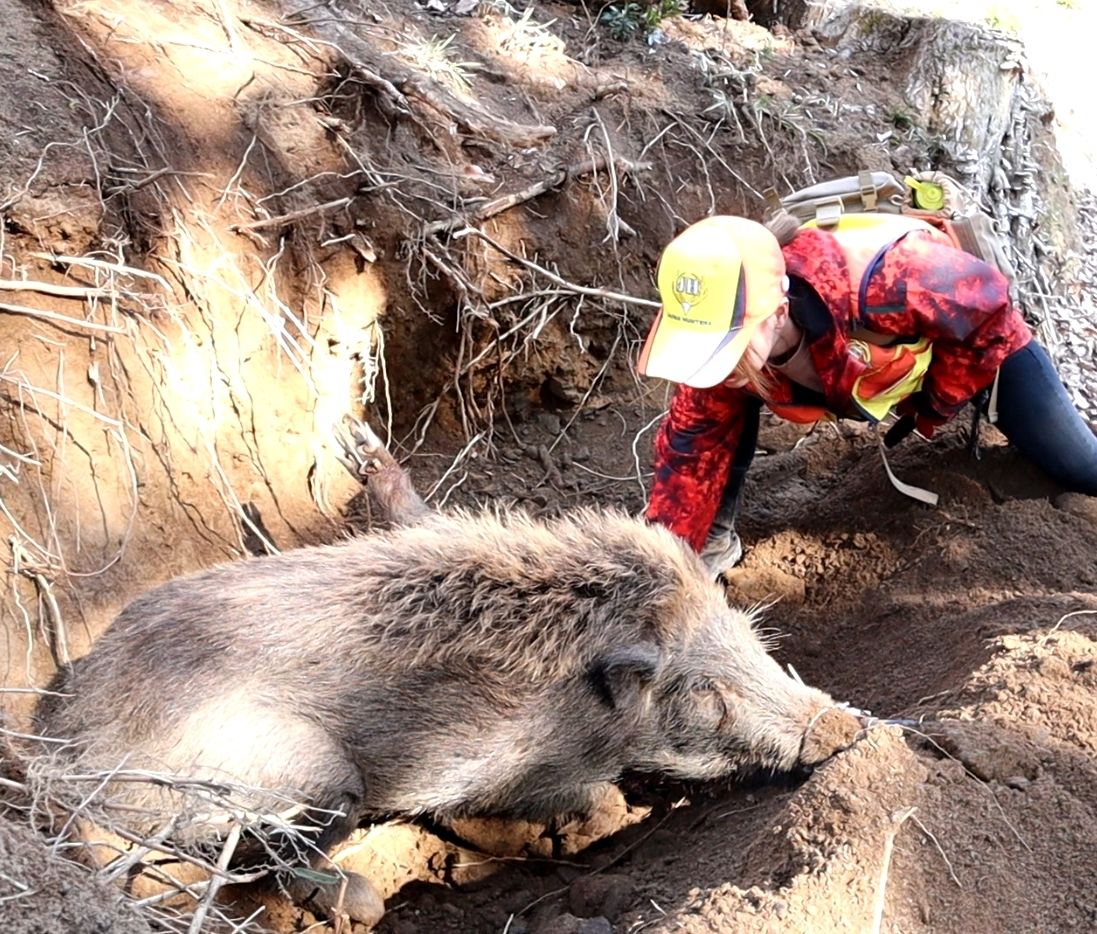
Nozomi kills a trapped boar. (Courtesy Nozomi’s Kari Channeru)
“I was full of remorse for making the boar suffer,” she says, insisting that the incident instilled in her a deep respect for the hierarchy of life. Committed to getting it right, she now goes to a nearby meat processing facility to practice her technique and learn more about boar anatomy.

Nozomi’s knife collection. The blade at top is used to kill a trapped animal and the other five are for dressing and butchering.
Once a boar has been killed, the carcass must be carried out of the woods—a labor-intensive endeavor, particularly if the animal is large—loaded onto a truck, and transported to a facility to be dressed and butchered.
Nozomi says that the resulting cuts of meat are tasty and versatile, something she demonstrates to viewers by introducing different dishes featuring boar.
She notes that one barrier that must be addressed is the difficulty in bringing boar meat to market. Since the Fukushima Daiichi accident in 2011, Ibaraki law requires that municipal staff be present while an animal is butchered at a licensed processing facility if the meat is to be sold commercially.
While there were concerns about the safety of farm and wildlife products in the wake of the disaster, Nozomi contends that there is no longer cause for alarm and that the boar she captures are perfectly safe to consume. However, the policy persists even though radiation levels in the meat are far below Japan’s regulatory limit. Compounding the problem is that many city offices lack the manpower to regularly send staff to butchering facilities, and much of the prey hunters bag winds up in their own freezers rather than on store shelves or at restaurants.
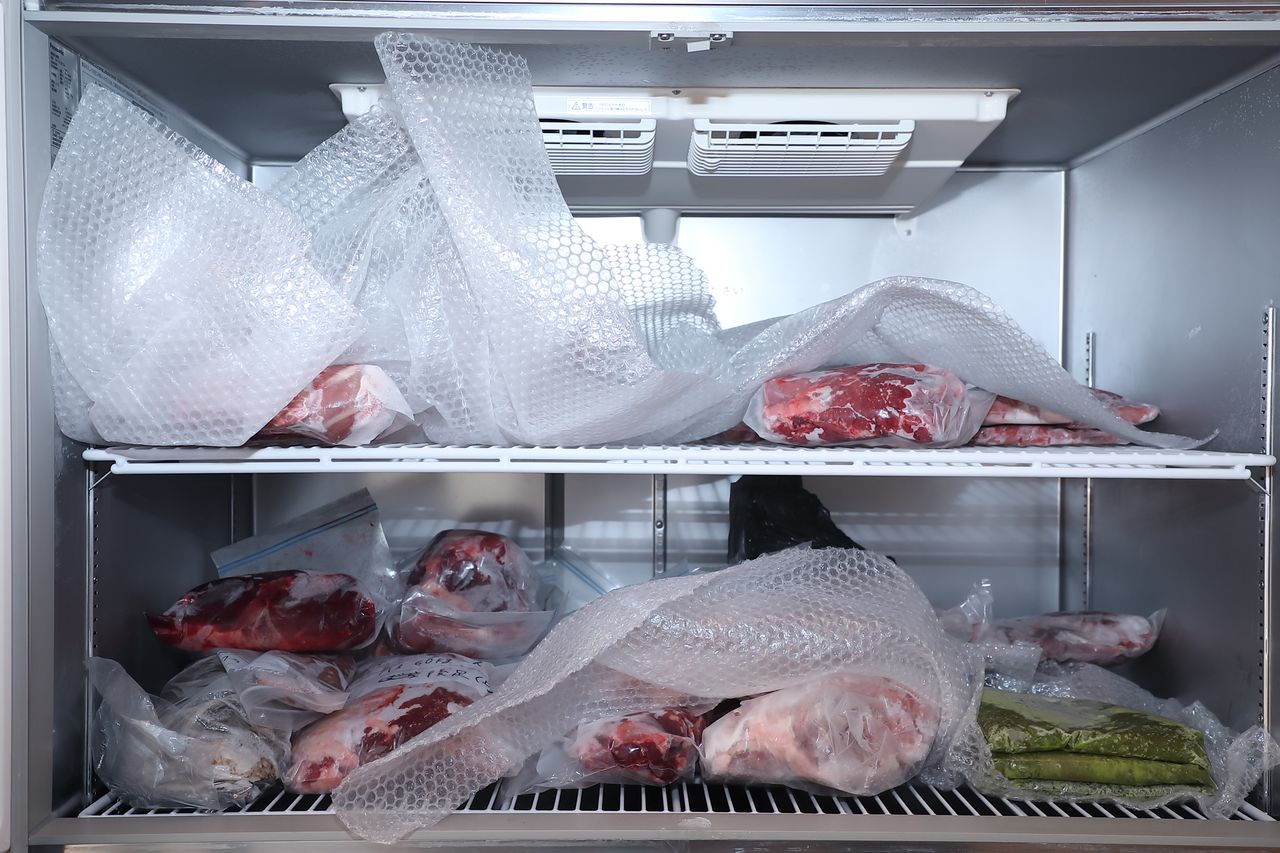
After butchering a boar, Nozomi keeps the meat in a freezer for later use.
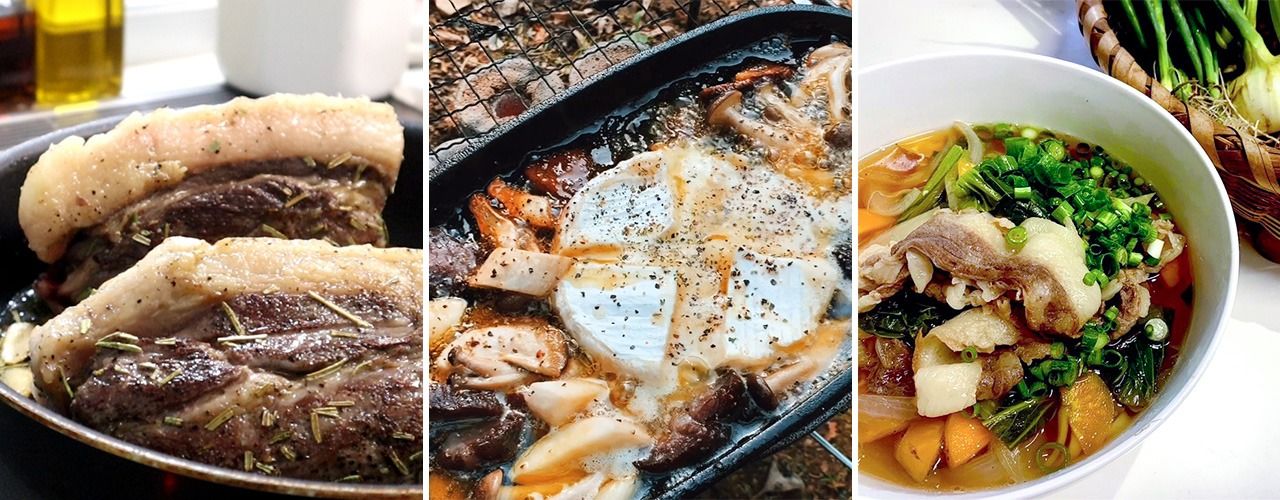
Some of the ways to cook boar meat Nozomi has introduced in her video include, from left, roasted, grilled with cheese, and as an udon topping. (Courtesy Nozomi’s Kari Channeru)
Although her YouTube videos have brought her a degree of online fame, Nozomi says her reason for taking up trapping is unchanged. “I started hunting not as a hobby but out of necessity. The videos are just a way to give back to society.” She maintains she would give up trapping if the boar herds could be kept at a manageable level by other means.
In the process of making videos, she has found herself part of a thriving community. She has connected with hunters in other regions and become a spokesperson for country living, not to mention inspiring young city dwellers to trade their office jobs for shovels and plows. She says she is grateful for the bonds she has formed online and in her community and hopes to continue sharing videos highlighting country life and the importance of living in harmony with nature.
(Originally published in Japanese. Interview photos by Hanai Tomoko. Banner photo: Nozomi holds a nasal snare for subduing a trapped hog. All other photos courtesy Nozomi.)
